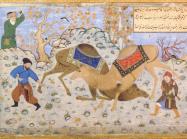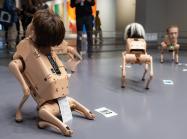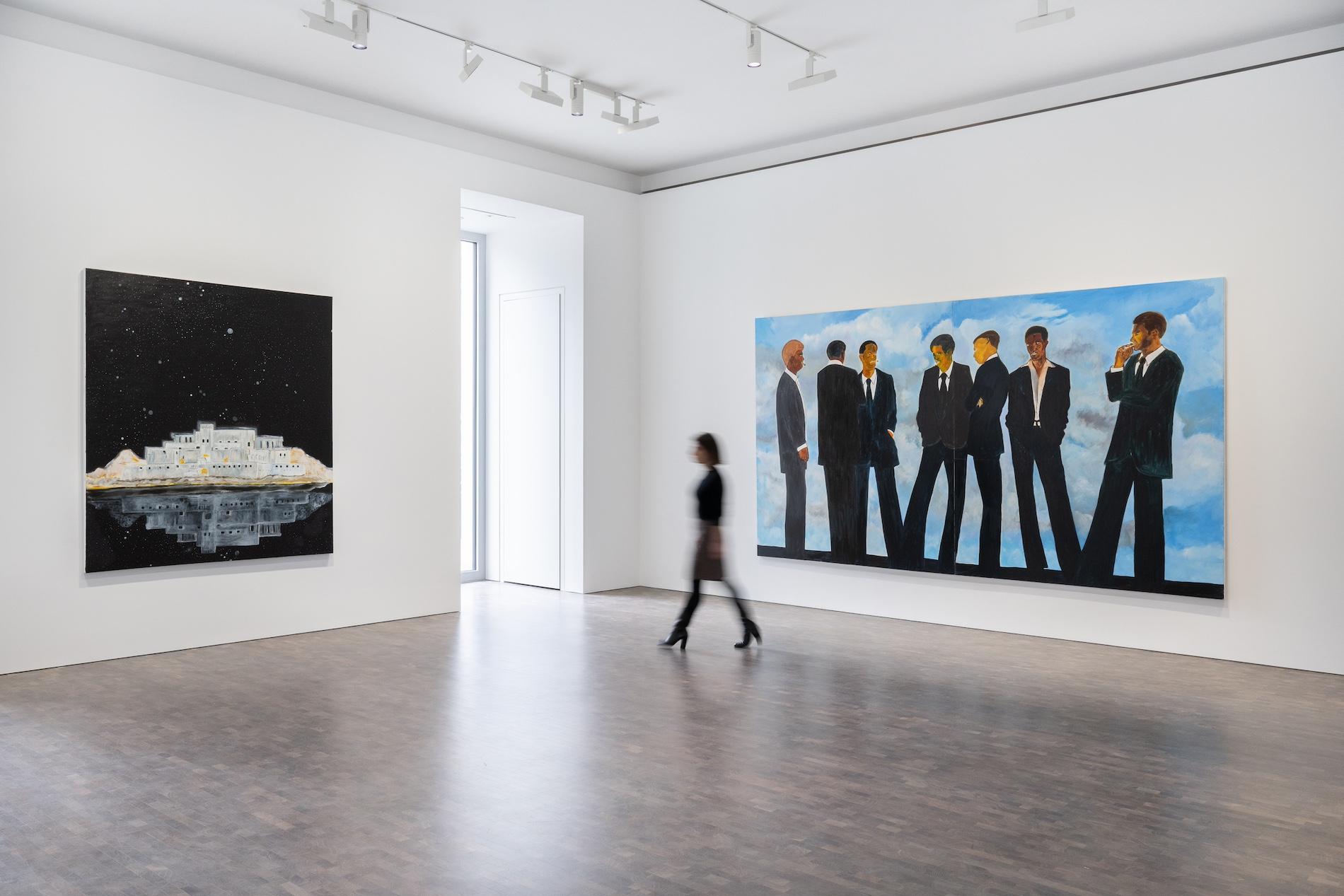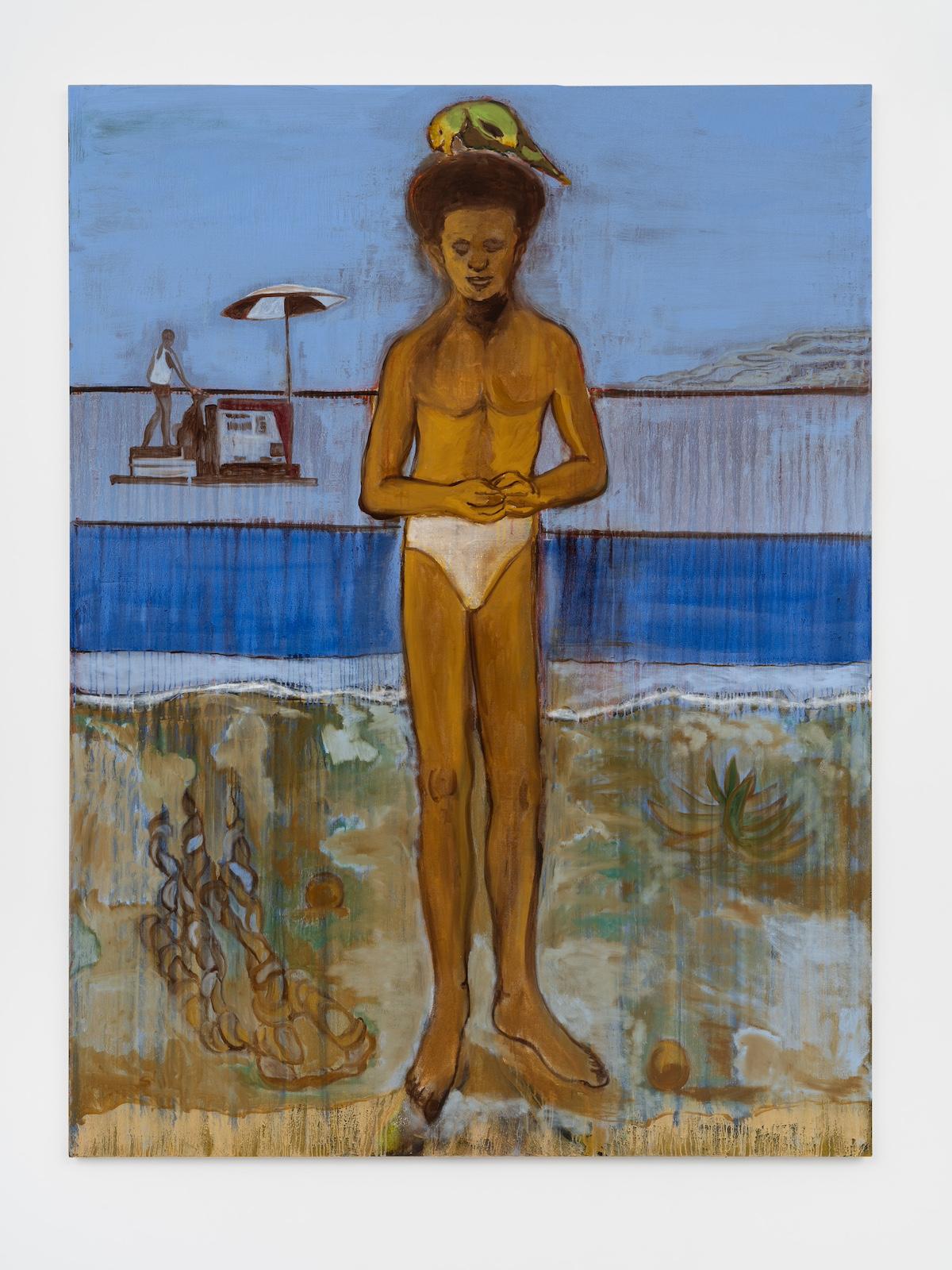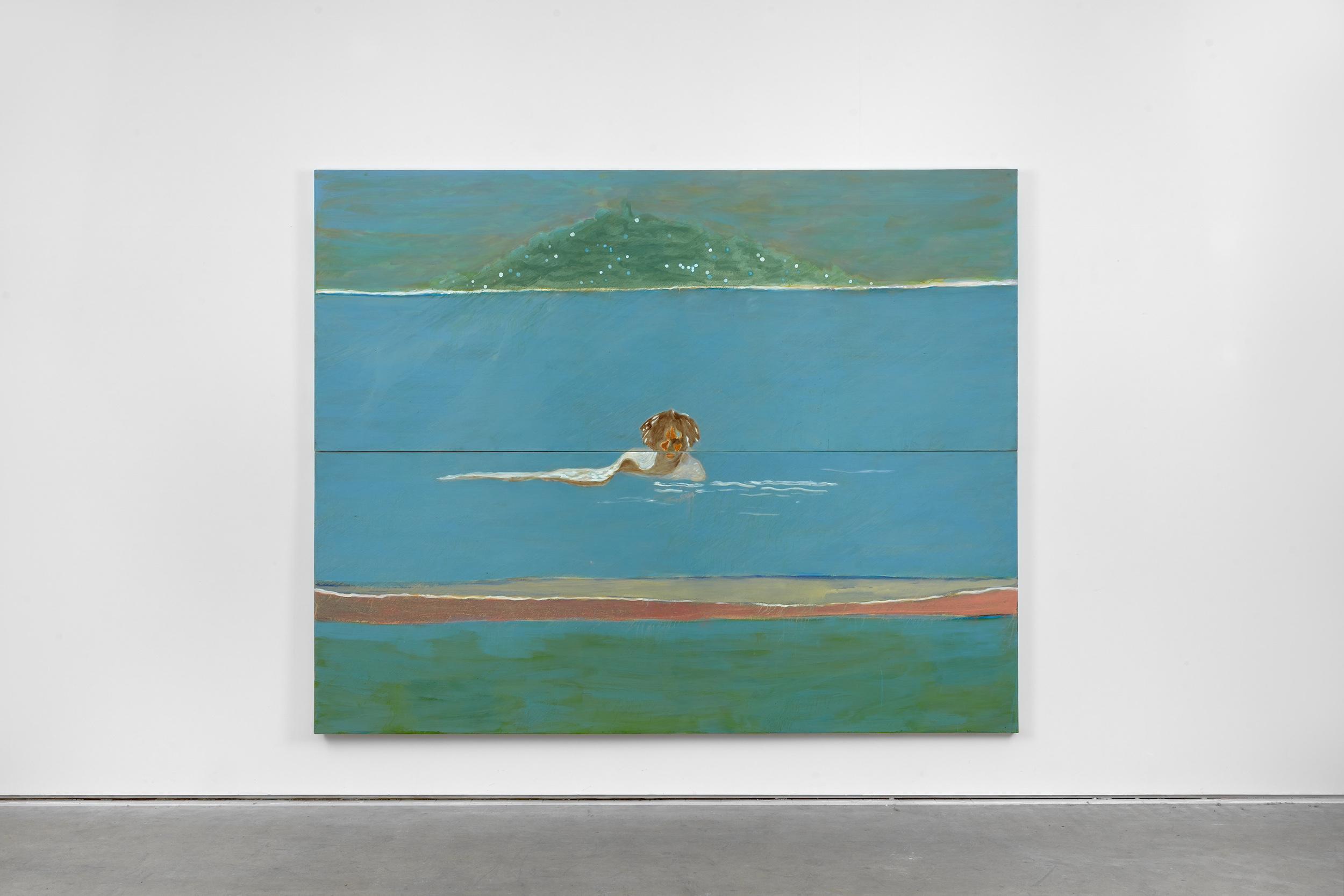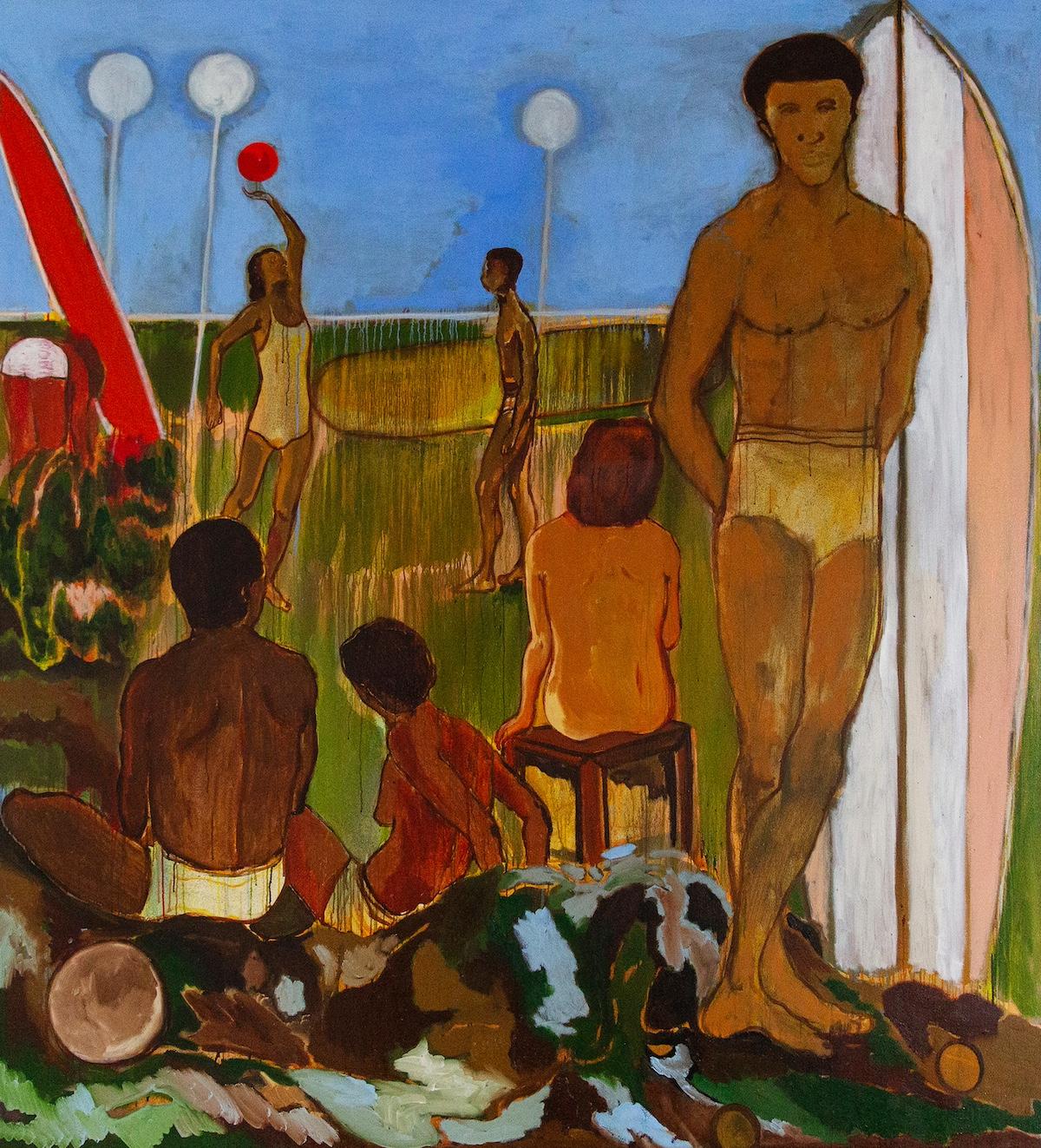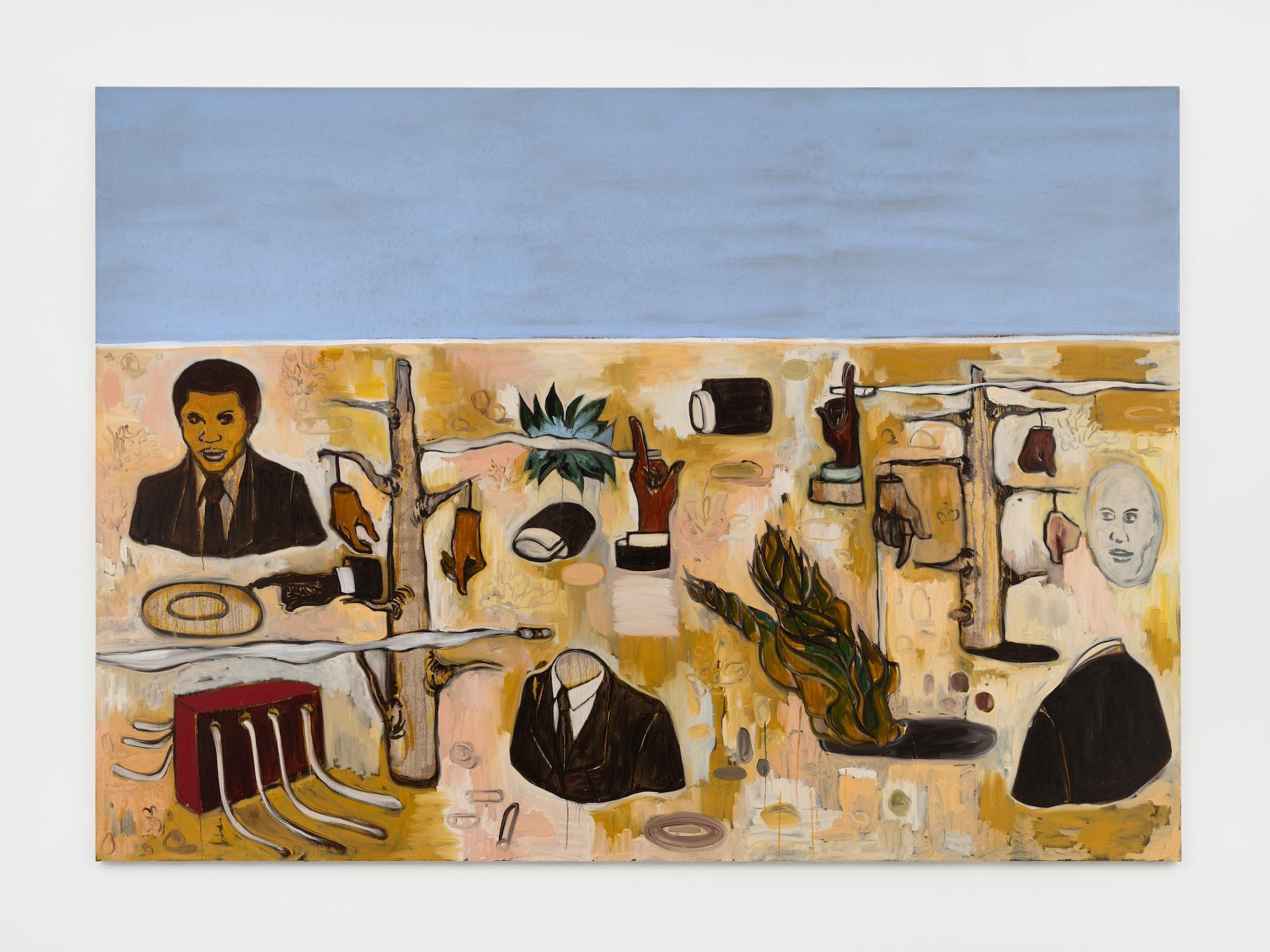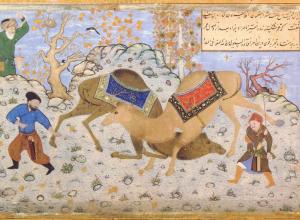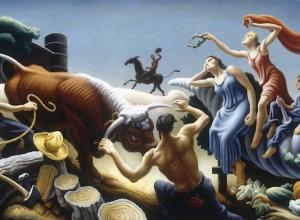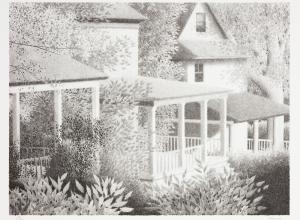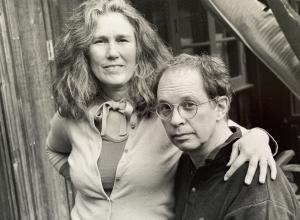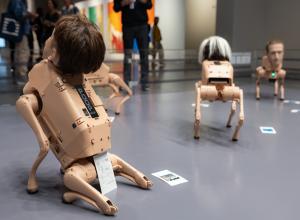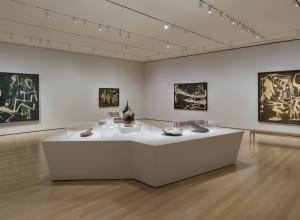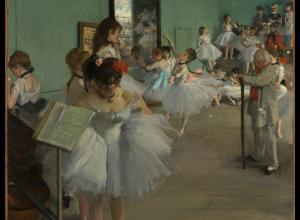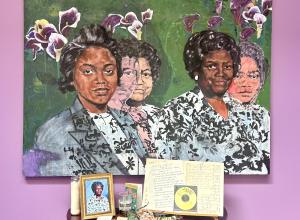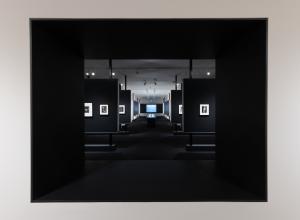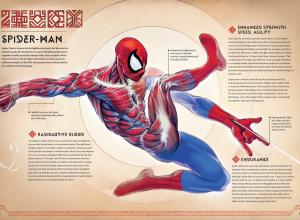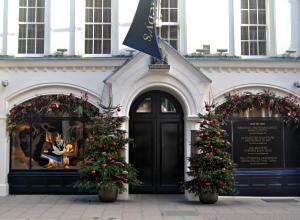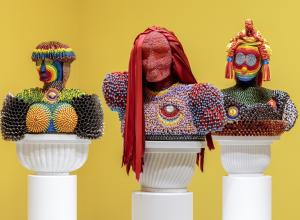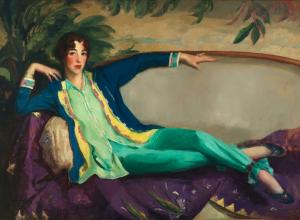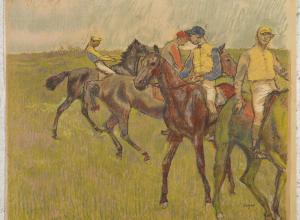Appah started drawing as a child, using the charcoal his grandmother cooked with. He received his BFA in 2012 from The Kwame Nkrumah University of Science and Technology and has work in major museums and galleries around the world— with a solo-exhibition, Beyond the Shadows: Gideon Appah Poetic Vision, opening June 12th at Gallery 1957 in Paris. Art & Object spoke with the artist about his art and process.
Megan D Robinson: You often use a distinctive color palette of royal blue, crimson, dark orange, and white. What draws you to this color palette?
Gideon Appah: I am drawn to colors that possess the quality of muteness. Also, the color’s application on the canvas makes a lot of difference. I paint by sketching out how the final work should look first, then I proceed to add light layers of paint, one on top of the other several times, till I arrive at the final result. The process creates the subtlety and softness of color.
I work on showing the time of day in a painting. If I choose to make a painting of an evening scene, I have a process I follow, even though it’s not one hundred percent strict. It’s a very flexible way of working. Accidents during the process have helped me several times to discover new ways of painting.

